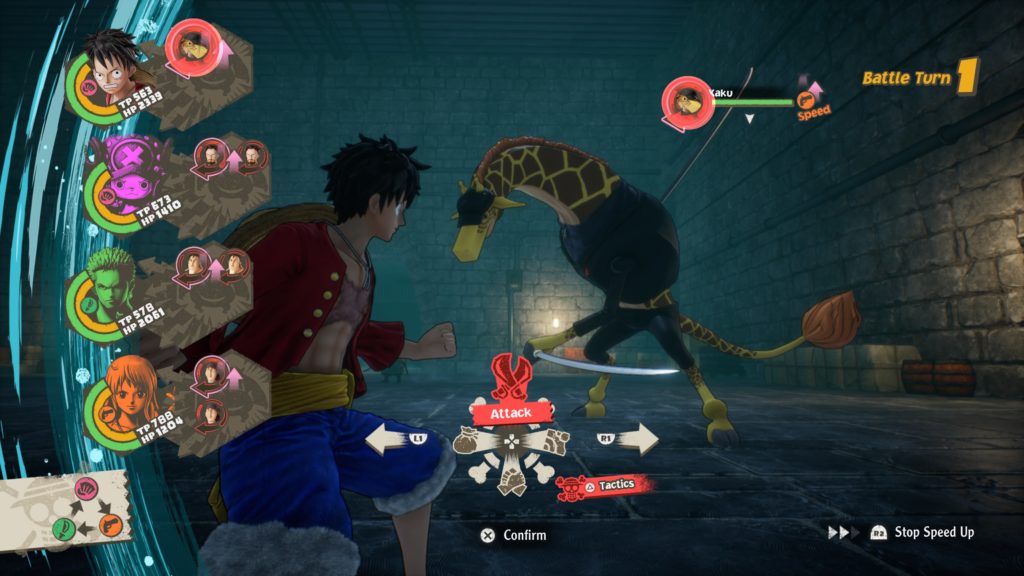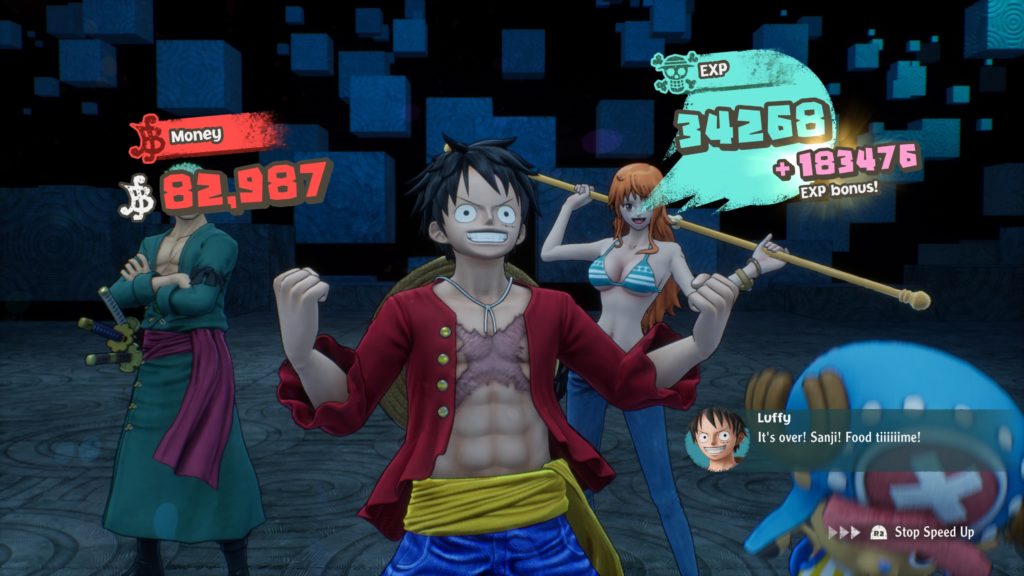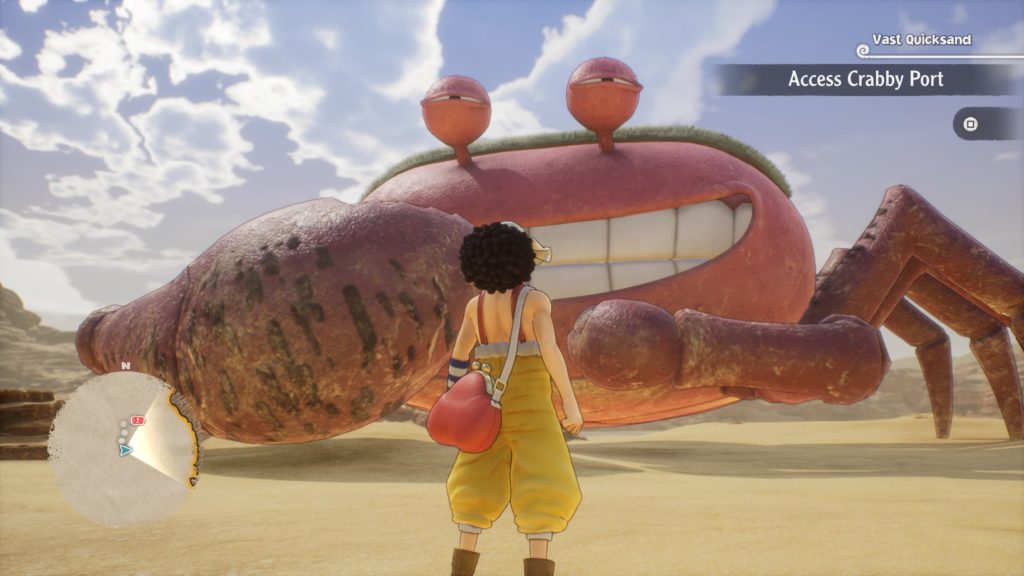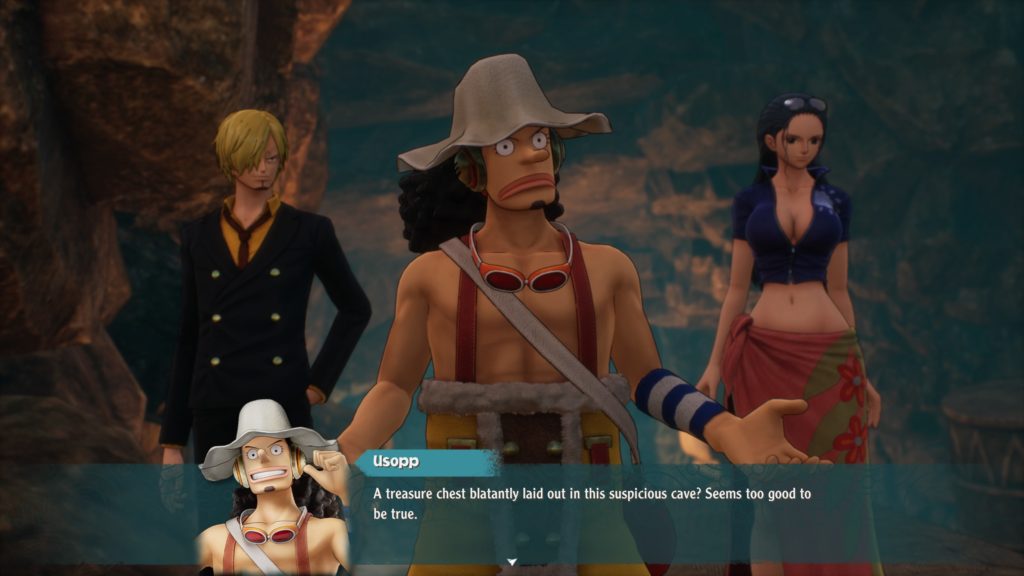- Genre: JRPG
- Platform: PS5
- Also Available On: PS4, PC, Xbox Series
I kind of played this one on a whim. I’ve watched some of One Piece here and there so I was familiar with the series, but I wouldn’t call myself exactly a fan of it. However, I am a sucker for JRPGs and it fit well within that. What it ended up being was a game that I enjoyed far more than I expected because of decisions they made around their core combat that really worked out to the game’s benefit.

This being a JRPG, the combat had to be good to make it worth playing. The series that immediately came to mind here was Shin Megami Tensei/Persona. It didn’t have that complexity, but the core feeling is there. The entire combat loop is around exploiting weaknesses to maximize effects. There’s the core unit type, which is a rock paper scissors mechanic that applies to most attacks. Most of the units then have some elemental attacks (ex: Nami has lightning, Sanji has fire, etc) that can be an additional layer of weakness against some units.
While this doesn’t have the same turn skipping functionality of the SMT series, the end result is similar due to the balance of the attacks. Simply put, you want to take advantage of these weaknesses because it’s effectively double damage. In SMT you’d add turns by attacking weaknesses, thereby getting you through more enemies safely. Here you’re just nuking enemies, again getting you through more enemies safely.
The other place this comes into play is with the regeneration of TP – this game’s mana stat. Most of the high end special attacks take up a significant amount of the player’s TP to the point where 3 or 4 attacks with them will often drain the entire TP pool. In a typical JRPG, I’d probably just hold onto those special attacks until a boss fight rather than spamming items to get the resource back. However, in this game TP regenerates on basic attacks. Because of this, you’ll often want to nuke as much stuff using AOE on turn 1, then finish off fights to regen TP as you mop up the rest of the enemies. Against bosses, you’ll do a bit of a back and forth where you go back and forth between heavy damage and regen phases, or in the case of the healer you spend time trying to determine when it’s the best chance to heal vs. regenerating TP to avoid running out. It’s another good way to really tie combat together.

The second piece of combat that I found smart was their use of a bonus XP mechanic. The short version of this is that a lot of fights ended up introducing some small mechanic to throw off the balance of combat – could be something like kill strengthened enemies before someone in your party dies, kill an enemy before it uses a strong attack, use a specific person to finish a boss, etc – that grants bonus XP if successful. The thing that threw me off initially is that this gave a ridiculous amount of XP, often being 400-500% of the XP of a fight. It seemed exploitative. However, over time it became clear to me that the balance of the leveling curve was actually built around achieving these to avoid grinding.
What these things do in practice is really just throw off your patterns and make combat more engaging. Yes, the enemies end up being the same as in many fights, but having to switch gears to figure out how to get people into the right position to clear out groups of specific enemies fast is fun. Having to figure out how to get just the right damage to make sure the very specific person kills a boss on next attack is fun. Having to suddenly have your party focus on something they may be weak to to get bonus XP is fun. It’s small constant tweaks to the core combat that make things just different enough to reduce repetition in a genre that is typically bound to repetition.
The final piece that just worked nicely was party hot swapping. During combat you can swap party members at any time as long as they have not yet attacked in the current turn. This could include just switching where party members are on the field, but it also includes swapping party members in from the reserves. It extends to hot swapping out party members that get knocked out, which comes in particularly handy against bosses. In practice what this does is always allow you to focus on having the right people in the right spots at all times. You don’t have to worry about figuring out what the best min/max party for an area is, but instead can just focus on having the right people for the situation. It reduces a lot of what is typical party stress in the genre and actually allows and encourages you as a player to try a bunch of different combinations. It results in the entire cast being familiar to you by the end of the game, because you’ll have been using everyone often throughout the game. It’s a smart way to integrate everyone into the experience while still only capping combat to 4 members and really goes against what is typical in a lot of JRPGs.

However, where the game nearly lost me was in the stuff that is tied to the narrative. It’s not that the narrative was bad, and honestly I enjoyed it a lot, but it was often forced in a way that didn’t feel right for the genre. There were long segments of 3-4 hours where I couldn’t explore. I couldn’t fast travel. I couldn’t go back to places that I had side quests in. I couldn’t really do anything but stick to the core narrative. In a lot of these places, there was also very little combat as it would often be sections of the game where you’re interacting with people in cities and dealing with One Piece-universe story segments that simply didn’t belong in the overworld.
As a pacing thing, this just felt off. It led to a bit of a weird situation where any time I was given the opportunity to freely run around, I felt like I had to do everything that was optional at one time. I couldn’t just go “ya I’m going to take 15 minutes to screw around” because I would often be stuck. The result of this was that a couple of the longer narrative-forced sections nearly had me shelving the game, simply because I wanted to be given a break to just do anything that wasn’t a fetch quest. This was another thing that felt a bit atypical of JRPGs, but in this case it felt like a negative to the experience.

Overall thought I was pleasantly surprised by this game. I figured it’d fill the gap between XB3’s DLC and Final Fantasy 16, but I ended up enjoying it enough to delay starting FF16 instead. It does a solid job of blending the One Piece IP with a really solid representation of the JRPG genre by borrowing combat reminiscent of Persona while doing a couple things here and there that broke some genre conventions, and it ended up being a better game for it. If you’re looking for something new to check out in this genre, I’d feel pretty good throwing this one out for a recommendation.

One Reply to “Game Ramblings #172 – One Piece Odyssey”
Comments are closed.